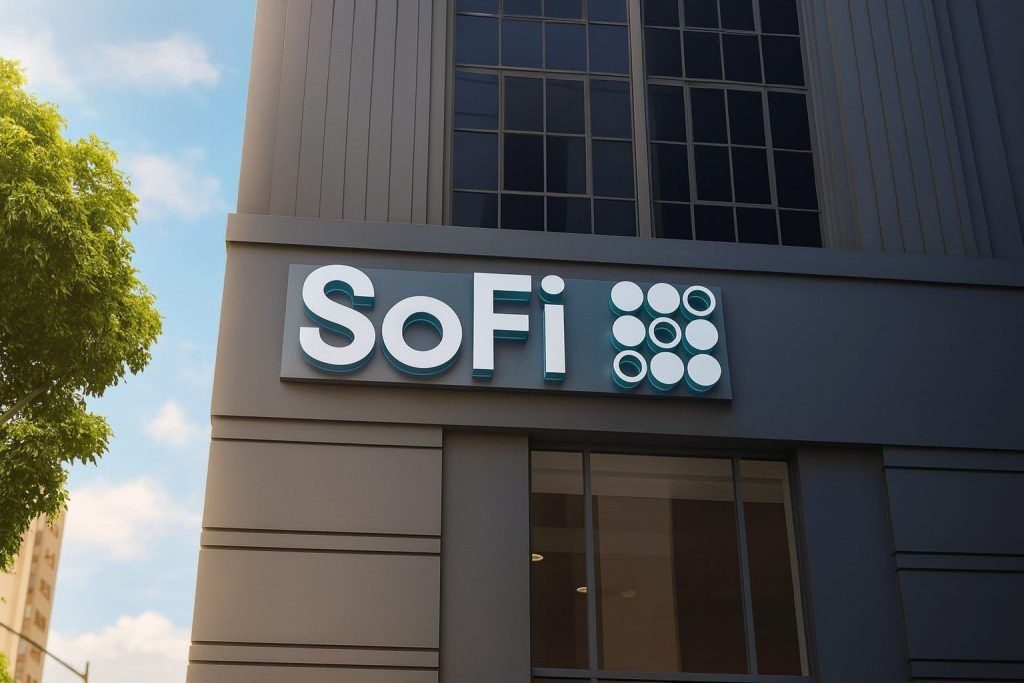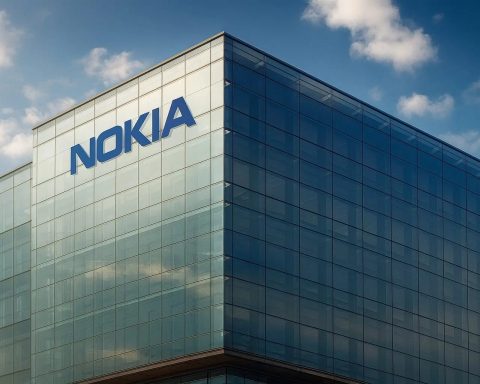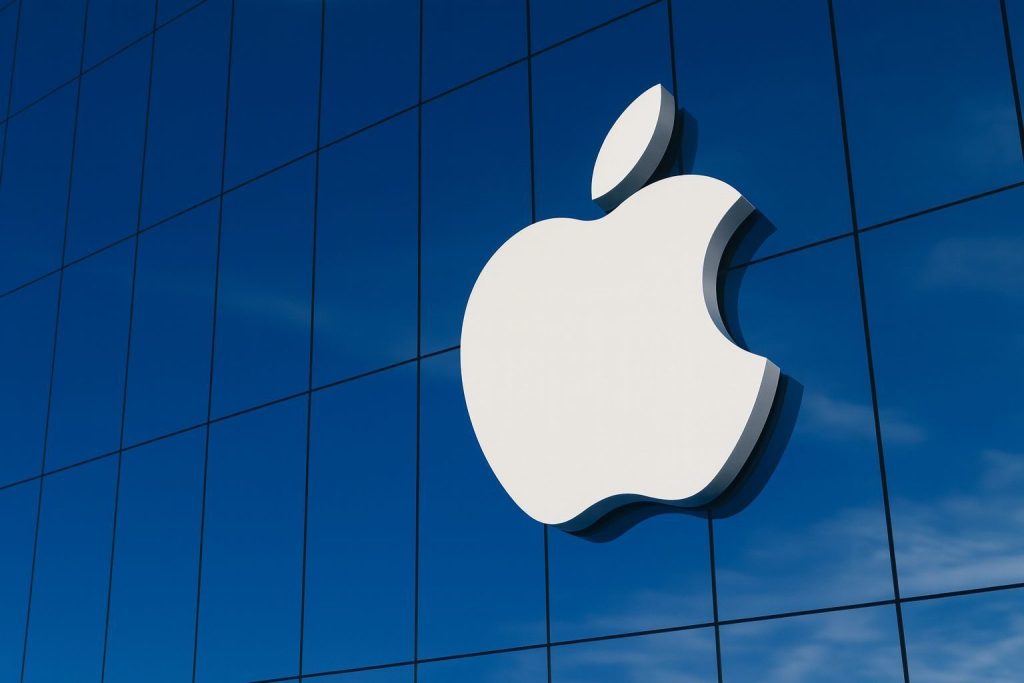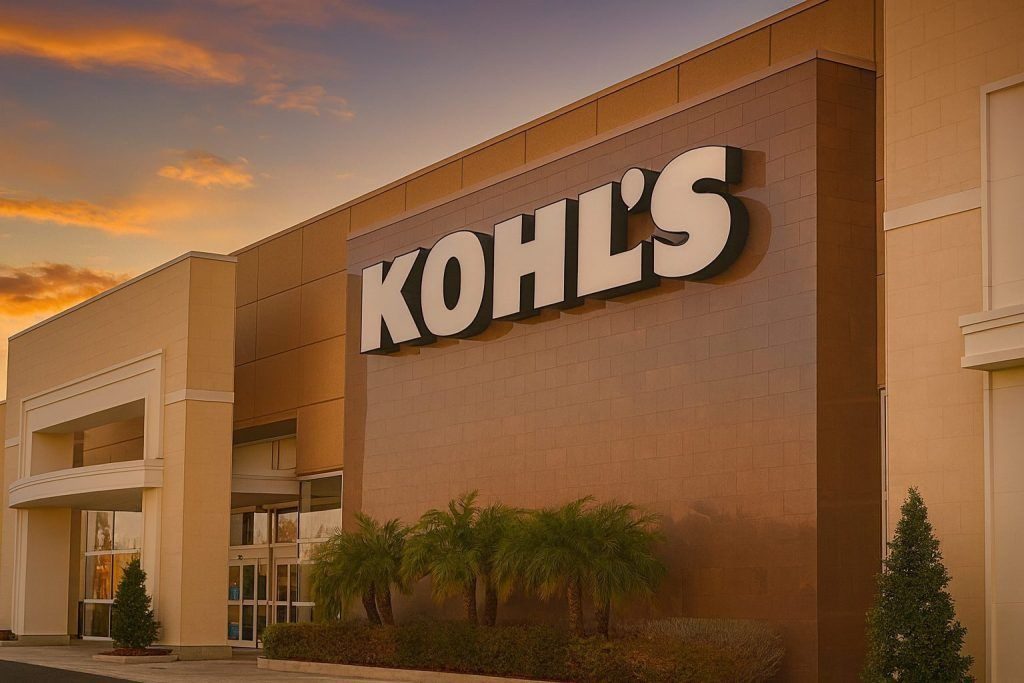Published: November 25, 2025
SoFi Technologies, Inc. (NASDAQ: SOFI) is treading water in Tuesday’s session, with the fintech bank’s share price hovering around $27.40 in mid‑day trading—essentially flat on the day after a powerful multi‑month rally and a fresh round of analyst updates.
Under the surface, however, there’s plenty going on: record quarterly results, raised 2025 guidance, a newly trimmed price target from Truist, and a Wall Street consensus that still labels SOFI stock a cautious “Hold.” [1]
Key Takeaways for SOFI Stock on November 25, 2025
- Price action: SOFI is trading near $27.40 on Tuesday, little changed intraday after a year marked by sharp gains and recent volatility.
- Big Q3 beat: In Q3 2025, SoFi delivered record net revenue of $962 million and GAAP net income of $139 million, with adjusted revenue up about 38% year over year and EPS of $0.11. [2]
- Raised 2025 guidance: Management now expects $3.54 billion in adjusted net revenue, $1.035 billion in adjusted EBITDA (≈29% margin), and $0.37 in adjusted EPS for full‑year 2025—above prior guidance and earlier Street expectations. [3]
- Street still cautious: MarketBeat’s latest tally shows 23 brokerages covering SOFI with an overall “Hold” rating and an average 12‑month price target around $25.06, slightly below today’s price. [4]
- Fresh target cut: Truist today lowered its SOFI price target from $31 to $28 while maintaining a Hold rating, citing tougher growth comparisons ahead as SoFi laps outsized gains in its Loan Platform Business. [5]
- Premium valuation: SOFI trades around 50.7× earnings with a P/E/G of 2.46 and a beta of 1.93, well above traditional bank multiples, and sits between a 12‑month low of $8.60 and high of $32.73. [6]
SOFI Stock Today: Price and Valuation Snapshot
According to recent MarketBeat data, shares of SoFi Technologies opened at $27.40 on Tuesday, implying a market capitalization of roughly $33.0 billion. The stock’s current valuation multiples—P/E of 50.74 and P/E/G of 2.46—place it firmly in high‑growth fintech territory rather than traditional banking. [7]
Other key metrics investors are watching:
- 12‑month trading range: low of $8.60, high of $32.73 [8]
- Liquidity and leverage: current ratio 0.80, quick ratio 0.16, and debt‑to‑equity ratio 0.31 [9]
- Momentum: Despite a recent pullback, TipRanks notes that SOFI remains up nearly 73% year to date, underscoring how strong 2025 has been for shareholders so far. [10]
With the stock now trading modestly above the average analyst target but below its 52‑week high, the market appears to be weighing powerful growth against an already rich valuation.
Record Q3 2025 Earnings Are Still the Core Bullish Catalyst
SoFi’s latest earnings report, released on October 28, 2025, remains the central driver of the current SOFI story. Management reported: [11]
- Net revenue: $962 million (record level)
- Adjusted net revenue: about $949.6 million, up 38% vs. a year ago
- GAAP net income: $139 million, more than double the prior‑year quarter
- Diluted EPS: $0.11, up from $0.05 and ahead of the roughly $0.08–$0.09 Street estimates
- Adjusted net income margin: about 15%, up from 9% a year earlier
Reuters highlighted that the earnings beat was driven by a surge in fee‑based revenue, record loan originations, and continued strength in SoFi’s fast‑growing Financial Services segment. [12]
Segment performance from SoFi’s own filing underscores how broad‑based the growth has become: [13]
- Lending: GAAP net revenue of $493 million, up 25% year over year
- Financial Services: net revenue of $419.6 million, up 76%
- Technology Platform (Galileo & Apex): net revenue of $114.6 million, up 12%
Overall, SoFi originated nearly $9.9 billion in loans in the quarter—a 57% jump from the same period in 2024—driven by strong demand across personal, student and home loans. [14]
Raised 2025 Guidance: Management Is Aiming Higher Than the Street
On the back of its record Q3, SoFi raised its full‑year 2025 outlook for the second consecutive quarter. Management now expects: [15]
- Adjusted net revenue: about $3.54 billion (up from $3.375 billion prior; ~36% YoY growth)
- Adjusted EBITDA: about $1.035 billion, implying a 29% margin
- Adjusted net income: roughly $455 million
- Adjusted EPS: around $0.37, up from previous guidance of $0.31
Those figures compare favorably with earlier consensus expectations around $0.32 EPS, and markedly exceed the roughly $0.26 EPS that analysts still project for the current fiscal year, according to MarketBeat’s most recent summary. [16]
In other words, SoFi’s internal forecast is more optimistic than Wall Street’s models, which is part of why some analysts remain wary: if macro conditions soften or growth in its loan and platform businesses slows, the company could miss its ambitious targets.
Deposits, Members and Fee Revenue: The Structural Bull Case
Beyond a single quarter, SoFi’s long‑term thesis rests on its evolution into a fully fledged digital bank and financial “super app.”
Key structural drivers include:
Explosive Member and Product Growth
TipRanks notes that SoFi has logged record member counts for 27 consecutive quarters, with unique members now exceeding 12.6 million—up nearly 35% year over year as of Q3 2025. [17]
SoFi’s own filings show that the Financial Services segment now totals over 16.1 million products, with SoFi Money, SoFi Invest, and the Relay financial dashboard each clearing multi‑million product milestones. [18]
This growing ecosystem matters because cross‑buy rates—members adopting multiple products—have climbed to around 40%, significantly improving unit economics, according to Hedgeye’s analysis of the quarter. [19]
Massive, Low‑Cost Deposit Base
Since obtaining a national bank charter, SoFi has leaned hard into deposits as its funding engine. By the end of Q3 2025, total deposits reached about $32.9–33.0 billion, up $3.4 billion just in the quarter, with nearly 90% of SoFi Money deposits coming from direct‑deposit members. [20]
Hedgeye estimates that this deposit base translates into roughly $627 million in annualized funding cost savings versus relying on wholesale funding, reinforcing SoFi’s structural margin advantage over many digital‑only rivals. [21]
Expanding Margins and Profitability
TipRanks points out that SoFi turned GAAP profitable in 2024 and has now logged eight consecutive quarters of positive earnings, with adjusted EBITDA margins rising to 29%, up from just 3% in 2021. [22]
Combined with rapid growth in fee‑based businesses—its Loan Platform Business alone is on pace for a $1 billion revenue run‑rate by 2026—Hedgeye argues that SoFi is increasingly behaving like a scaled fintech platform rather than a traditional bank, justifying a premium valuation in their view. [23]
Wall Street View: Consensus ‘Hold’ and Mixed Price Targets
Despite the eye‑catching growth and raised guidance, SOFI stock has not won over all skeptics.
MarketBeat’s latest report on November 25, 2025, notes: [24]
- 23 brokerages currently cover SOFI
- Ratings breakdown: 3 Sell, 12 Hold, 7 Buy, 1 Strong Buy
- Average 12‑month price target: about $25.06
TipRanks’ separate coverage shows a similar Hold consensus among 16 top‑tier analysts, with 5 Buys, 7 Holds, and 4 Sells, and an average price target around $27.21, implying slight downside from current levels. [25]
Adding to that cautious tone, Truist today cut its SOFI price target from $31 to $28 while reiterating a Hold rating, citing an expected slowdown in growth as SoFi begins to lap unusually strong Loan Platform Business comparisons in 2026–2027. [26]
At the same time, SoFi continues to attract institutional attention. Recent 13F filings show mixed moves:
- Ensign Peak Advisors trimmed its SOFI stake by about 3.5% in Q2. [27]
- Jaffetilchin Investment Partners reduced its position by 12.4%, while other institutional investors—including ARK Invest and several large asset managers—have significantly increased their holdings. [28]
Overall, about 38% of the float is held by institutions and hedge funds, reflecting both conviction and active repositioning around the name. [29]
Key Risks: Valuation, Macro Headwinds and Insider Selling
Even SoFi bulls acknowledge that SOFI stock is not without meaningful risks.
Premium Valuation vs. Traditional Banks
TipRanks highlights that SoFi trades at a forward P/E around 45× and price‑to‑book of roughly 3.6×, compared with about 1.2× P/B for many traditional banks. [30]
That premium valuation leaves less room for error if growth slows, credit losses rise, or margins come under pressure as interest rates fall and deposit competition intensifies.
Macro and Credit Risk
With expectations for lower interest rates ahead, some investors worry SoFi’s net interest margin could compress, particularly because the company entices depositors with above‑average yields. [31]
At the same time, SoFi’s rapid loan growth naturally raises concerns about potential losses in a downturn. So far, management and external analysts note that credit metrics are actually improving, with personal‑loan net charge‑offs and 90‑day delinquencies trending lower in recent data. [32]
Insider and Fund Selling
Recent MarketBeat notes also highlight that company insiders have been net sellers, unloading roughly 175,000+ shares worth about $4.7 million over the past three months, even as some institutions trimmed positions. [33]
Insiders sell stock for many reasons (diversification, tax planning, liquidity), but heavy selling during a strong run can amplify market skepticism when valuations are already stretched.
Regulatory & Product‑Expansion Risk
SoFi’s push into crypto trading and plans for a SoFi USD stablecoin by 2026 add both growth potential and regulatory uncertainty. [34]
Additional scrutiny around digital assets, fintech banking models, and AI‑driven lending could create new compliance costs or limit certain products over time.
What to Watch Next for SOFI Stock
For investors tracking SOFI into year‑end and 2026, several catalysts and signposts stand out:
- Execution vs. Guidance
The single biggest question is whether SoFi can actually hit its $3.54 billion revenue and $0.37 EPS targets for 2025. Any upward or downward revision in the next earnings report is likely to move the stock. [35] - Margin Trajectory
With adjusted EBITDA margins already near 29%, further expansion—or any unexpected compression—will influence how comfortable investors are with SoFi’s elevated multiples. [36] - Deposit and Member Growth
Sustained double‑digit growth in members, products and deposits remains critical for the long‑term “super app” narrative. Investors will watch for any sign of slowing onboarding or cross‑sell. [37] - Regulatory and Crypto Developments
Updates on SoFi’s crypto platform rollout and the proposed stablecoin launch will be important, both as a growth driver and a potential source of regulatory friction. [38] - Analyst Re‑ratings and Target Changes
With consensus still at Hold and targets clustered around or slightly below the current price, future upgrades, downgrades or target revisions—from firms like Goldman Sachs, Mizuho, and Truist—could shape near‑term sentiment. [39]
Bottom Line: A High‑Growth Fintech Caught Between Bank and Tech Valuations
On November 25, 2025, SOFI stock is essentially pausing for breath: price action is calm, but the debate between bulls and bears is as active as ever.
- Bulls point to soaring revenue, expanding profitability, a rapidly growing member and deposit base, and management’s increasingly confident guidance as evidence that SoFi is evolving into a scaled fintech platform worthy of a tech‑style multiple. [40]
- Bears focus on rich valuation, macro and credit risks, insider selling, and the possibility that growth normalizes as SoFi’s early hyper‑growth years fade. [41]
For now, the market seems to agree with Wall Street’s “Hold”: SOFI remains a high‑risk, high‑reward fintech name, where future performance will depend heavily on management execution and the broader economic backdrop.
Disclaimer: This article is for informational purposes only and does not constitute investment, tax, or financial advice. Always do your own research and consult a licensed financial professional before making investment decisions.
References
1. www.marketbeat.com, 2. investors.sofi.com, 3. investors.sofi.com, 4. www.marketbeat.com, 5. www.tipranks.com, 6. www.marketbeat.com, 7. www.marketbeat.com, 8. www.marketbeat.com, 9. www.marketbeat.com, 10. www.tipranks.com, 11. investors.sofi.com, 12. www.reuters.com, 13. investors.sofi.com, 14. investors.sofi.com, 15. investors.sofi.com, 16. www.marketbeat.com, 17. www.tipranks.com, 18. investors.sofi.com, 19. app.hedgeye.com, 20. investors.sofi.com, 21. app.hedgeye.com, 22. www.tipranks.com, 23. app.hedgeye.com, 24. www.marketbeat.com, 25. www.tipranks.com, 26. www.tipranks.com, 27. www.marketbeat.com, 28. www.marketbeat.com, 29. www.marketbeat.com, 30. www.tipranks.com, 31. www.tipranks.com, 32. app.hedgeye.com, 33. www.marketbeat.com, 34. www.reuters.com, 35. investors.sofi.com, 36. investors.sofi.com, 37. investors.sofi.com, 38. www.reuters.com, 39. www.marketbeat.com, 40. investors.sofi.com, 41. www.marketbeat.com







